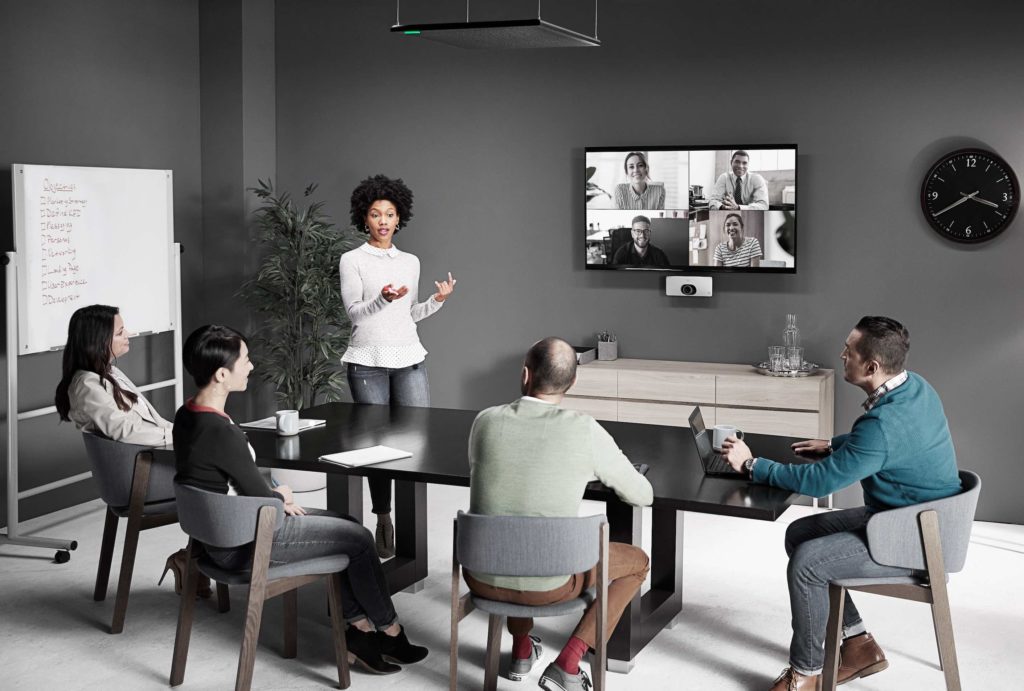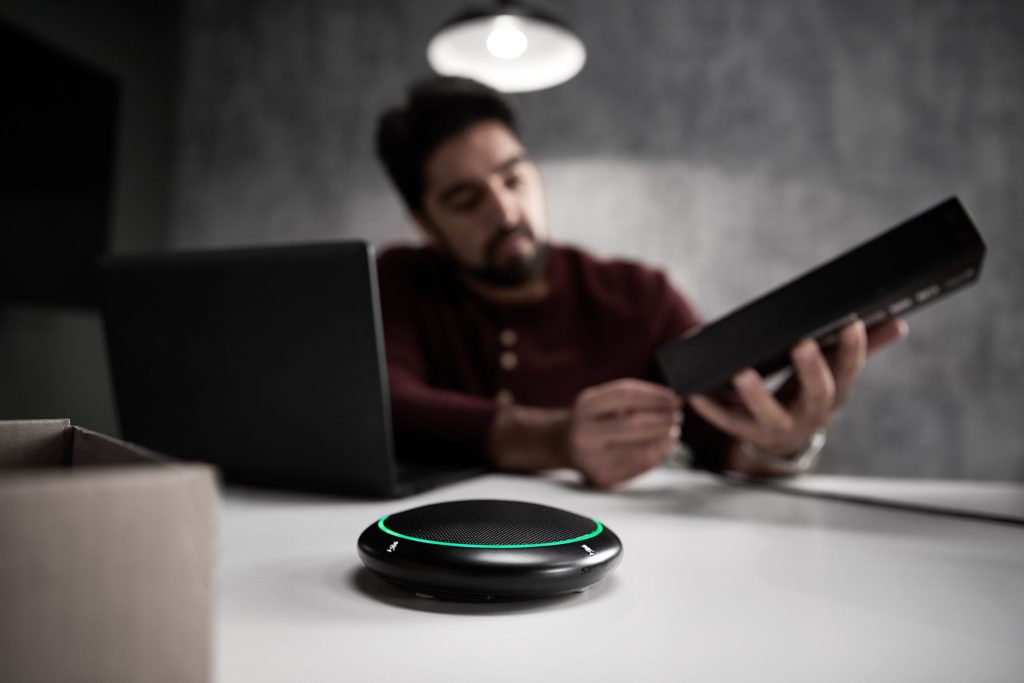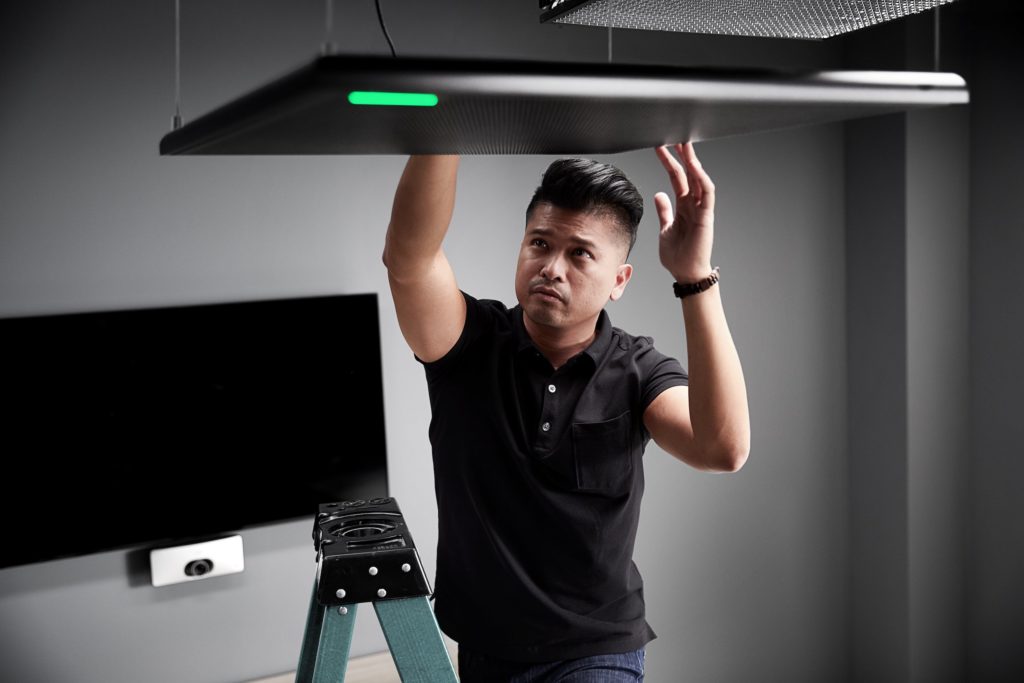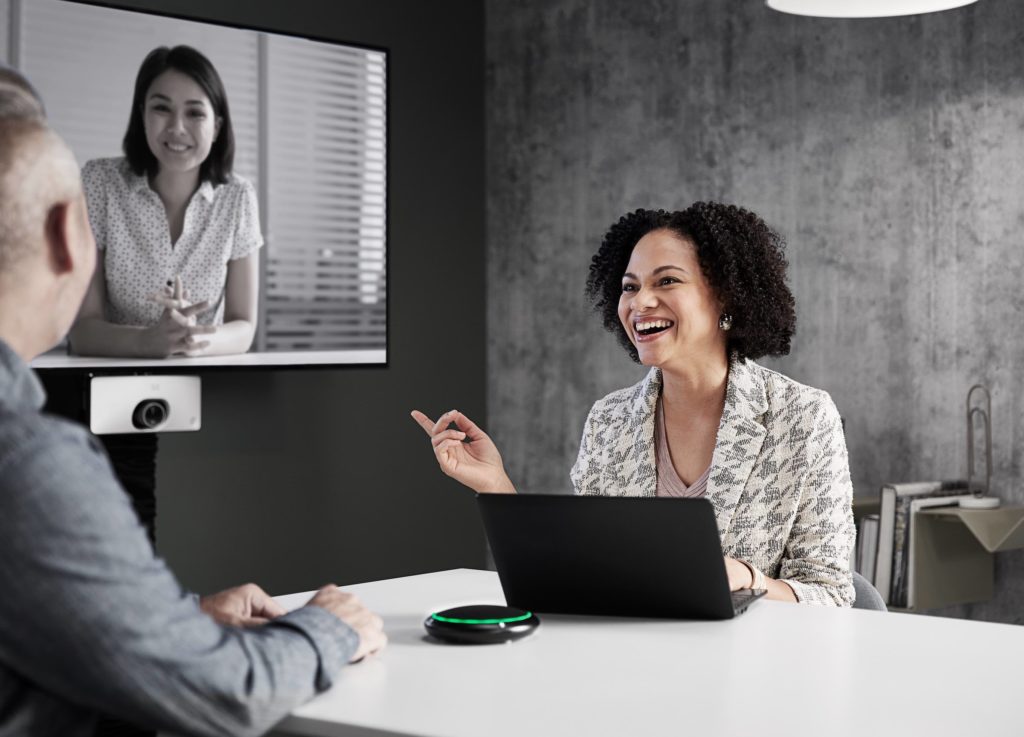News
25 Jun 2020
Ensuring Consistent Conferencing Quality Around the World
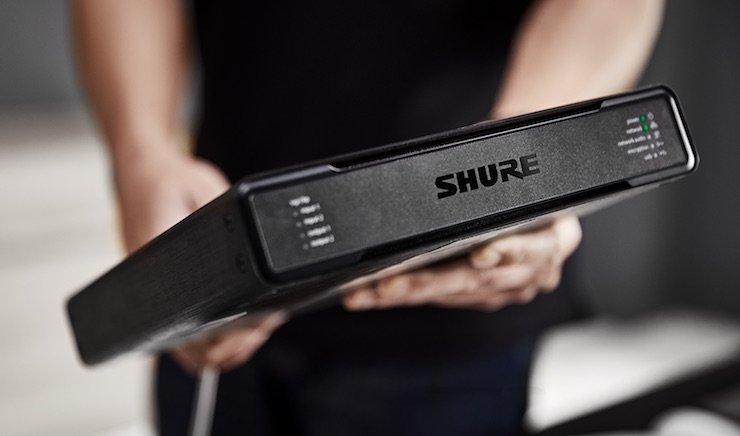
Subscribe to CX E-News
In recent years, conference rooms have evolved from formal, single-use spaces into multifunctional areas that can host everything from a large board meeting to an informal collaborative session between colleagues.
As the purpose of these spaces has changed and grown, so has the conferencing technology inside them and the demands placed on it. Nowhere is this more apparent than at large global organisations requiring effective and efficient communication at all of their locations.
Multinational companies are increasingly trying to manage and communicate across multiple time zones, however there are hurdles to doing this.
Whereas many employees now expect to be able to walk into a meeting room anywhere in the world and know how the technology inside it works, a lack of standardisation and the need for custom solutions to optimise each space often mean that this is not always possible. And it’s not just the user interface that needs to be familiar: back-end equipment also needs to be able to guarantee the consistency of experience that has become so important these days.
This is something that can be a real challenge for the integrator who has to design each installation. While the IT world relies on common technology standards in situations like this, it can be more complicated for AV. There are so many variations in terms of the size, shape and acoustic qualities of rooms that a one-size-fits-all approach is rarely successful.
Fortunately, just as IT departments expect tools that can deliver consistency, ease of use and repeatable performance, a DSP processor designed for conferencing applications may make this possible for the AV world, too.
The IntelliMix P300-IMX Audio Conferencing Processor helps produce reliable, high-quality audio. When paired with the Microflex Advance Ceiling and Table Array Microphones or Microflex Wireless, the IntelliMix P300-IMX can aid sound consistency in rooms of all shapes and sizes, while also helping reduce costs due to its ease of setup and reduced installation time. This is achieved in a number of ways:
Fixed Architecture
A DSP platform with a fixed architecture provides a simple and intuitive setup. This results in less DSP programming and commissioning time onsite, which may decrease costs and means there is less opportunity for human error.
Unlike open architecture solutions, with the P300 you don’t need to drag and drop blocks into a schematic; the blocks are static so there’s a defined processing path. While settings can be changed, the majority of the hard work has already been done, meaning you simply have to choose your mic and run with it.
Templates for microphones and the ability to build in presets further reduce the pressure on installers to replicate rooms while helping to create a more consistent experience across locations. This too assists in lowering costs for the company, as well as installations that are completed more quickly and with less disruption to working environments.
Multi-room Installations
Larger installations with multiple rooms and buildings can be made more efficient by using system configuration software that allows the integrator to configure the microphone and DSP offsite.
The Designer 3.1 software application allows each MXA910 Ceiling Array or MXA310 Table Array to be pre-configured for the P300. These settings can be uploaded on the job site, fine-tuned and tested, saving the integrator time and effort and making the project less intrusive for the client.
Hardware and software such as IntelliMix and Designer are quickly becoming essential tools for organisations hoping to provide the quality and consistent conferencing experience users have come to expect – no matter where in the world they are.
CX Magazine – June 2020
LIGHTING | AUDIO | VIDEO | STAGING | INTEGRATION
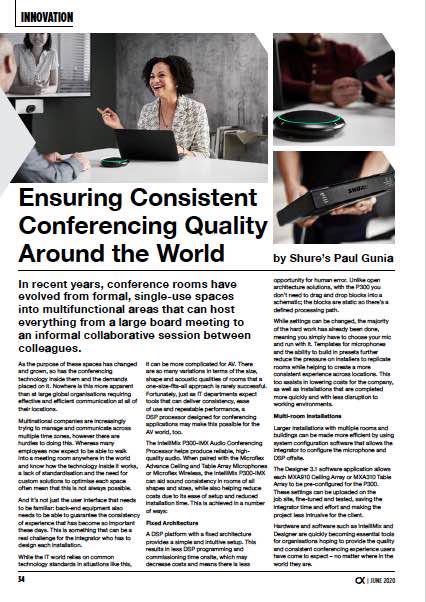
Entertainment technology news and issues for Australia and New Zealand
– in print and free online www.cxnetwork.com.au
© VCS Creative Publishing
Subscribe
Published monthly since 1991, our famous AV industry magazine is free for download or pay for print. Subscribers also receive CX News, our free weekly email with the latest industry news and jobs.

